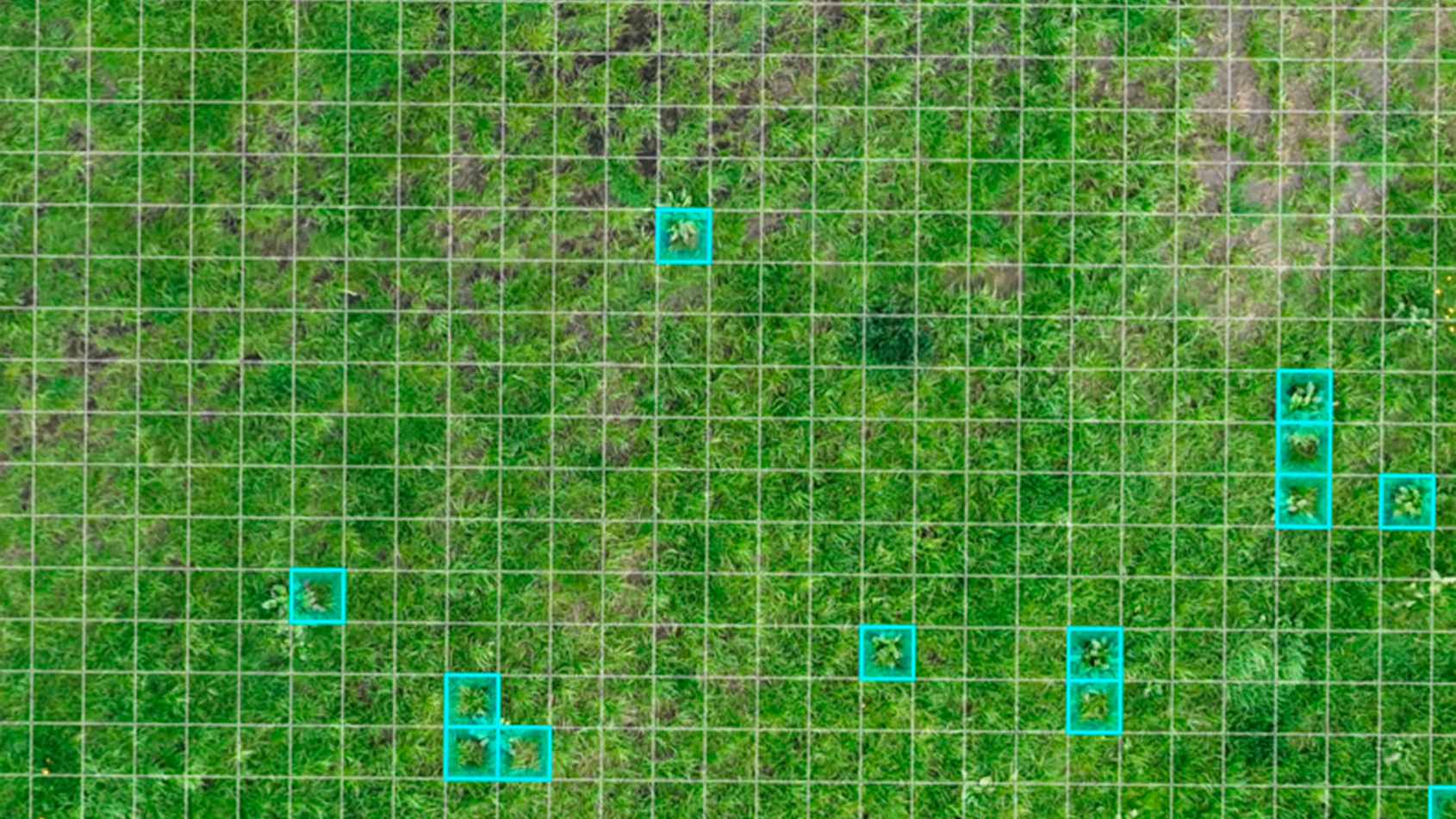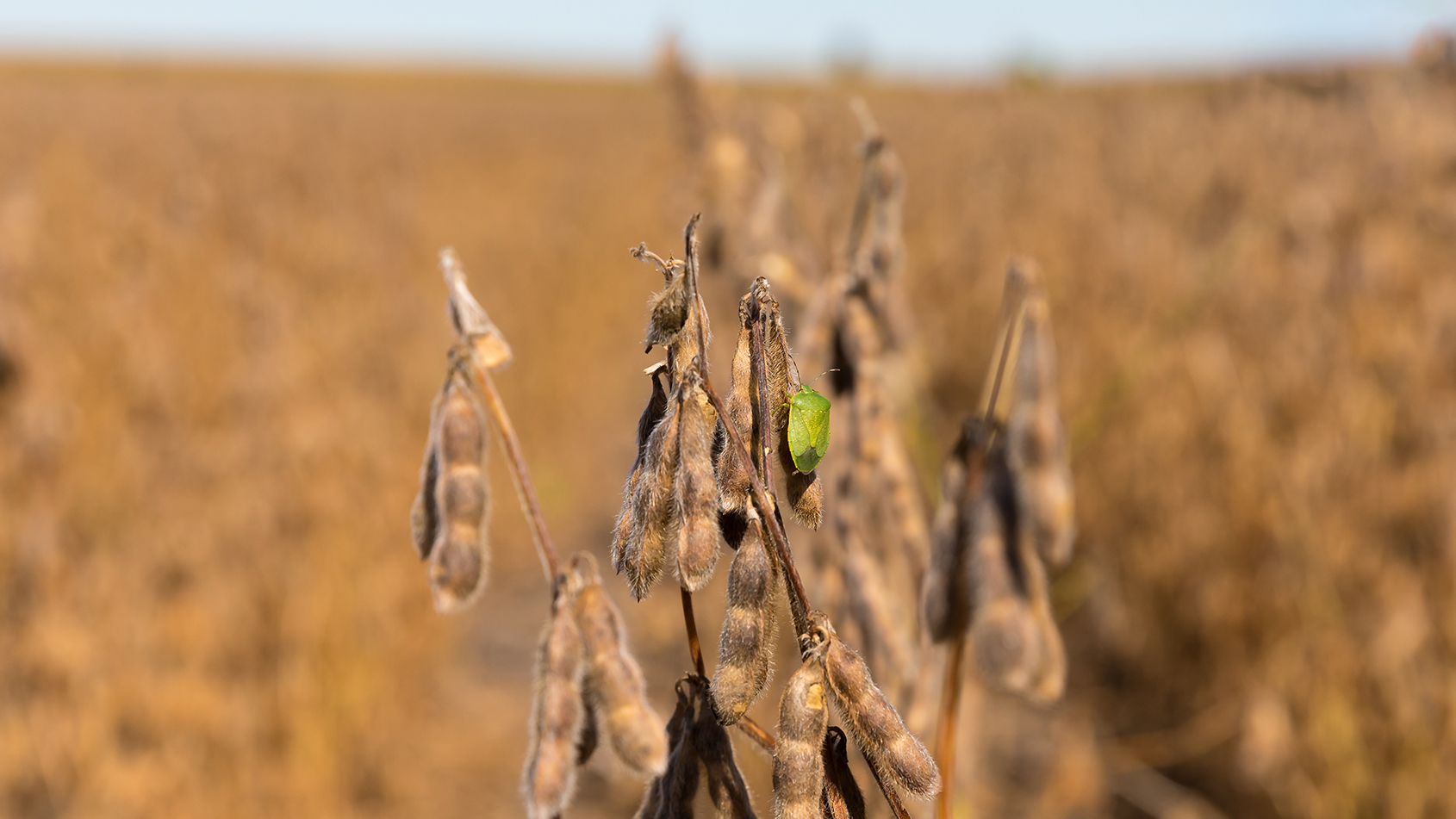Increasing yield on a wheat field in Brazil with PIX4Dfields
When it comes to wheat crops, lodging is a serious problem. It hinders harvest, causes losses, and reduces grain quality. High levels of nitrogen in the soil and excessive amounts of fertilizer application increase the risk of lodging and negatively affect grain yield.

Auster Technology, is a Brazilian company that develops technologies for nitrogen management in agriculture. Combining remote sensing technologies with crop information, they create smart fertilizer prescriptions.
Their main solution is Smart-N, a system that prescribes nitrogen at a variable rate by combining various data sources. Their aim is to increase production by area and reduce the waste of nitrogen fertilizers, bringing more efficiency and sustainability to their customers' crops. They have also created Smart-Brake, a solution for better adjustment of growth regulators in cotton, and last year they launched Smart-Seeding, for adjusting the plant population based on different productivity zones within the field.
Auster offers solutions as services directly to end users. In Brazil, their clients are medium and large-scale farmers who have machinery capable of variable-rate fertilizer applications. By June 2024 there were already 118 thousand hectares (292 thousand acres) that received Smart-N in corn, wheat, beans and cotton fields in Brazil.
Variable rate nitrogen application reduces lodging by over 90%
The Auster Technology team achieved success in reducing lodging by 91.5% in an irrigated field in the central region of Brazil. The project took place in June 2022, with the client's primary aim being to increase yields. They conducted a comparison by applying smart nitrogen algorithms to half of the area and a fixed rate to the other half, maintaining the same average rate on both sides.
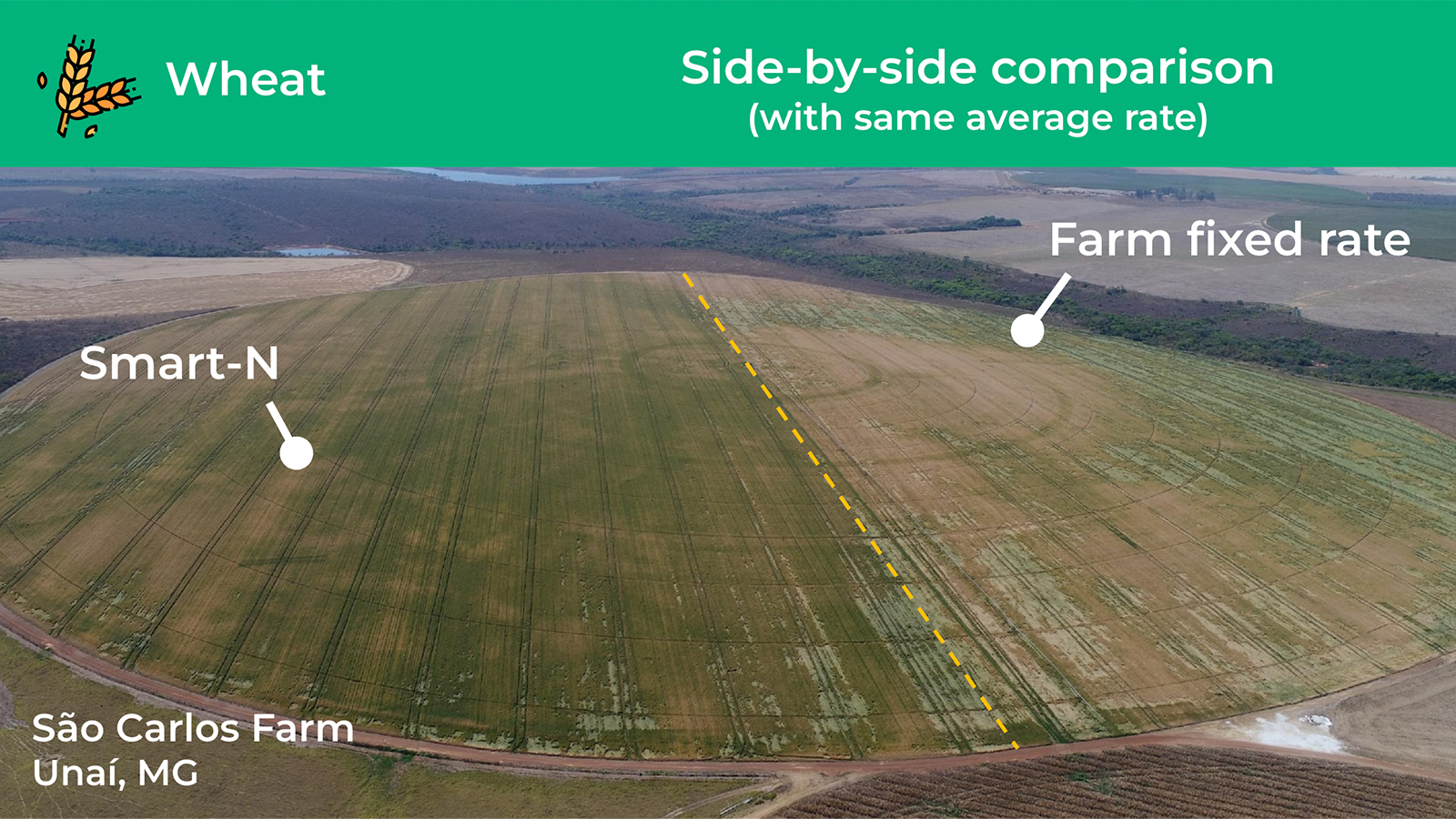
To generate nitrogen prescriptions, they mapped the area using a multispectral camera and processed the images using PIX4Dfields. Afterward, the data was post-processed with the team’s proprietary algorithm combining other data from the field they collected, and the recommendation was delivered to the farmer.
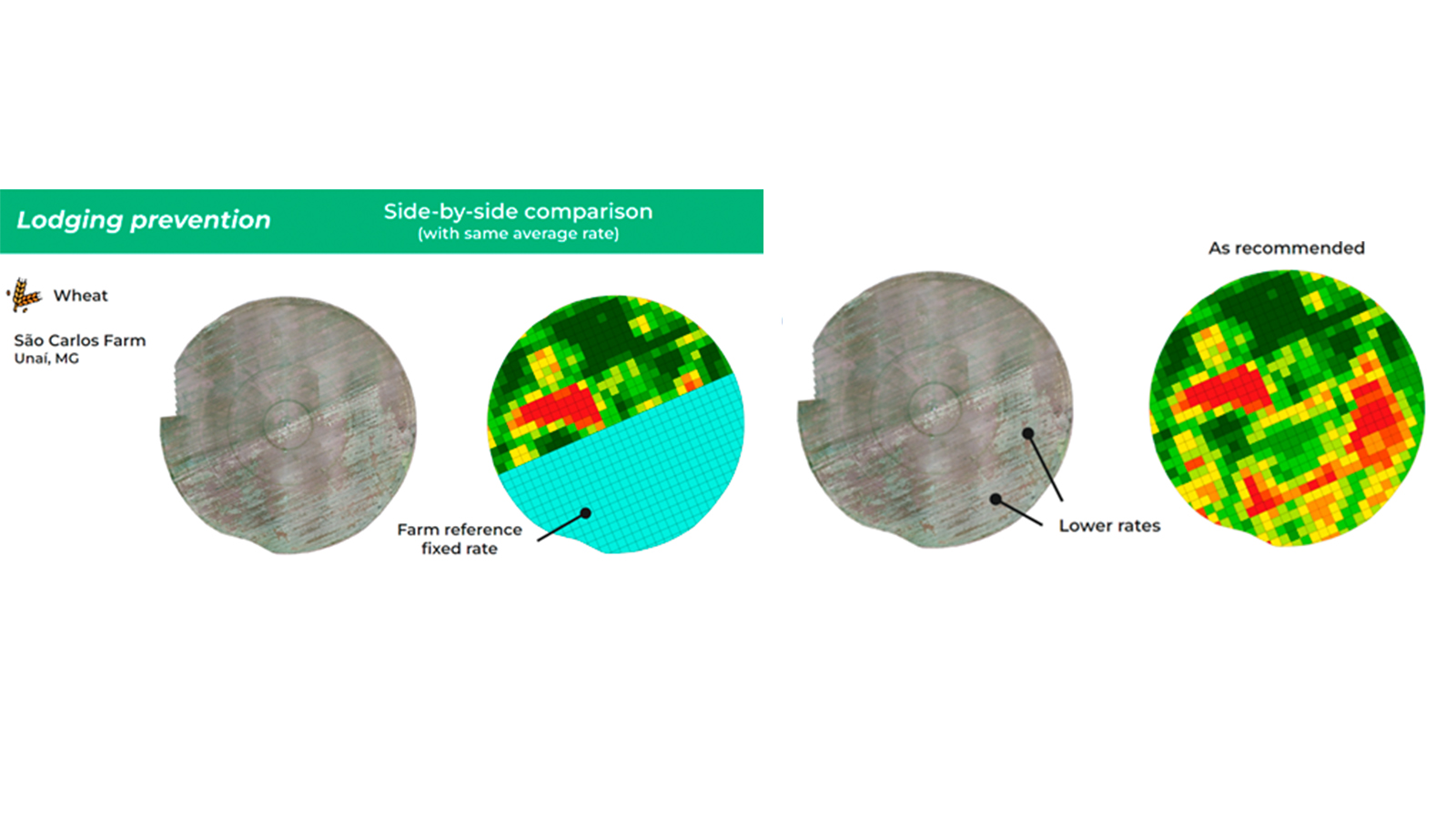
After spreading the nitrogen fertilizer and around 3 weeks before harvest, the team mapped the area once again and processed the images in PIX4Dfields, which took just 15 minutes. After processing the orthomosaics and evaluating the results, they observed substantial differences in lodging between each half.
They measured the area affected by lodging on each side and got the following results:
- 56.65% lodging on the fixed rate side (farm default management)
- 4.82% lodging on the side fertilized using variable rate nitrogen prescription
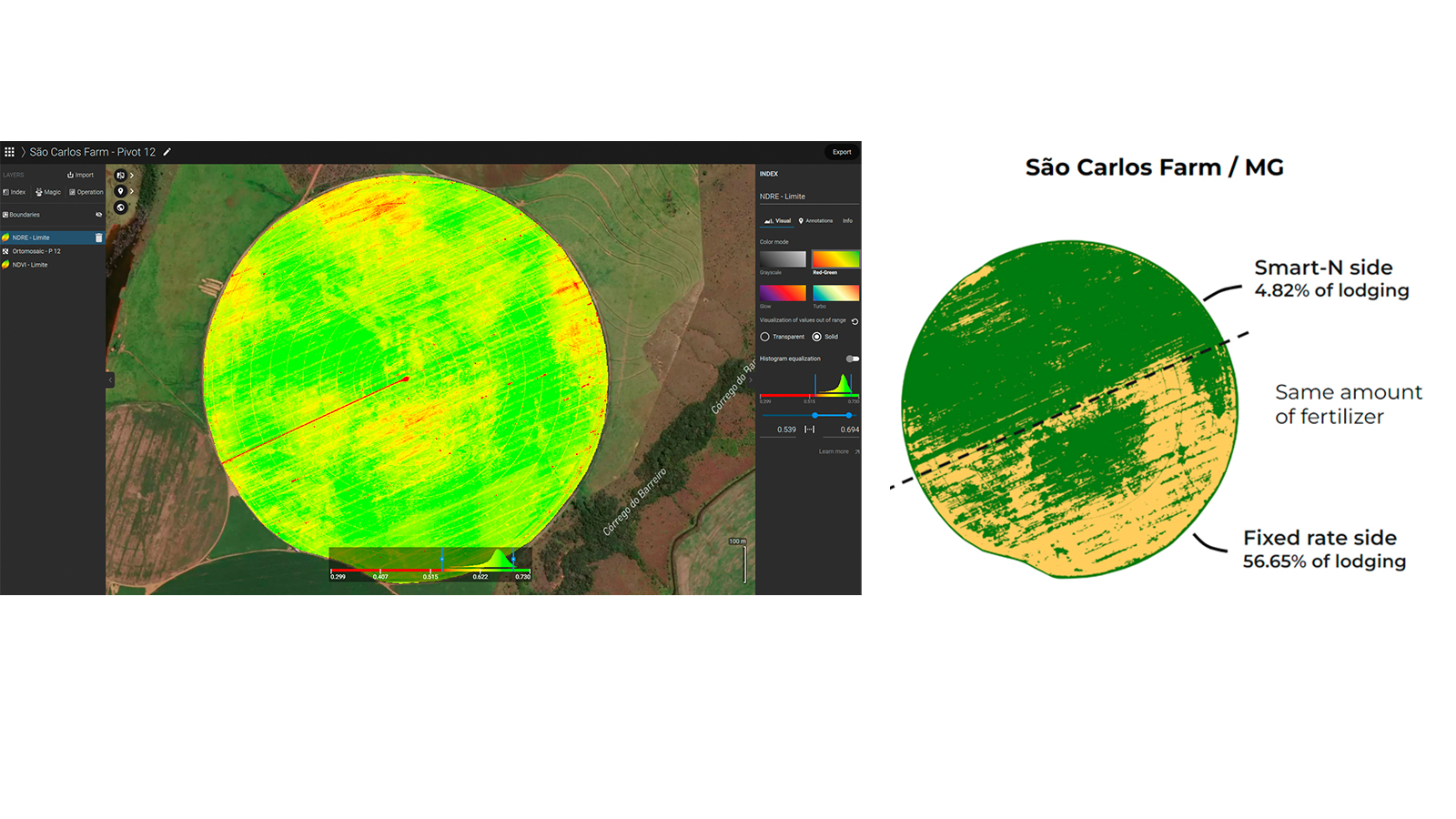
The areas affected by lodging were also clearly visible using PIX4Dfields’ satellite data. The Auster Technology team used this functionality to validate their analysis by comparing the orthomosaics with the satellite image of the field in PIX4Dfields. The results matched exactly in both cases, and the team was able to deliver a more credible analysis to the customer.
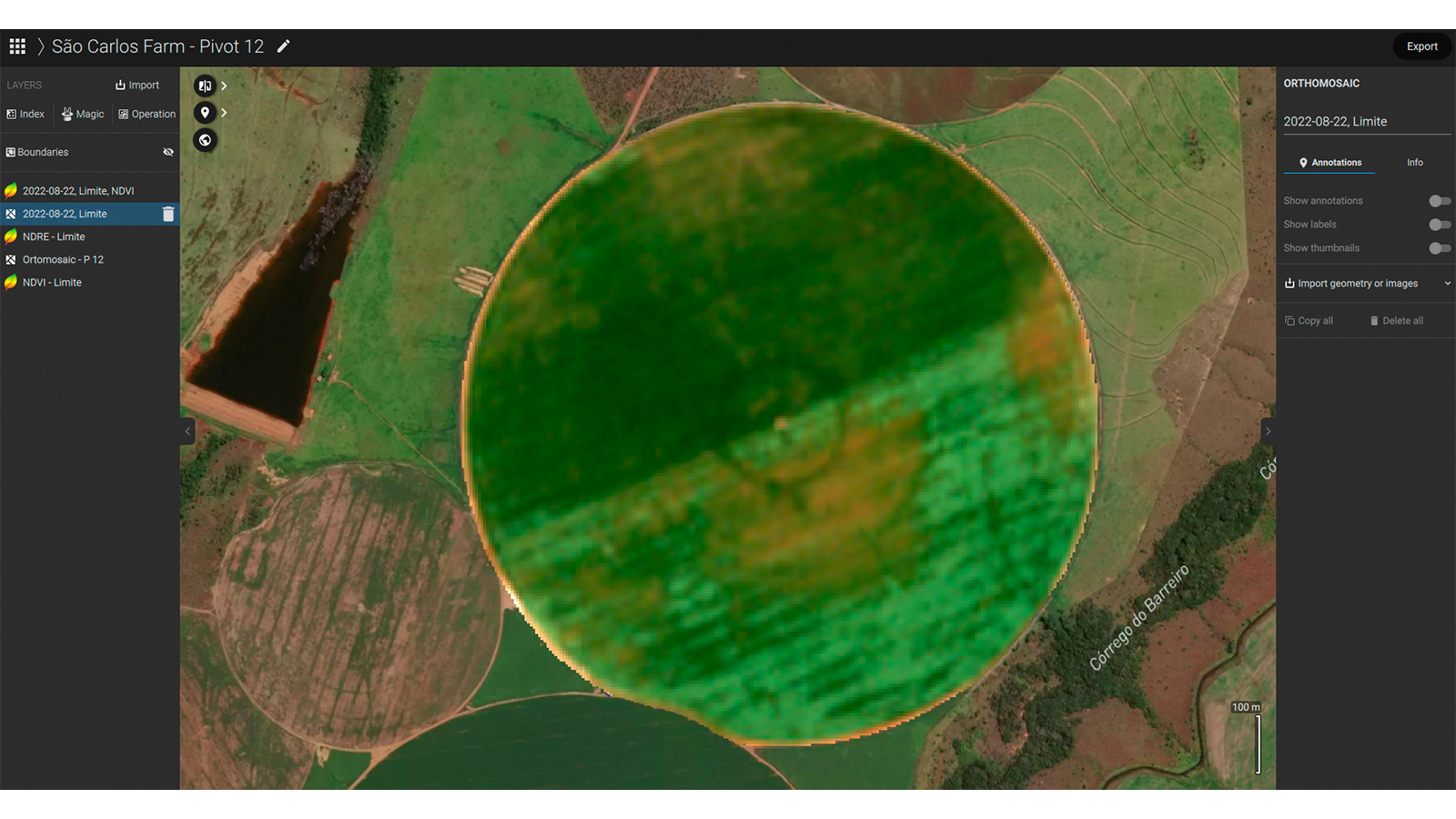
Project details
| Location | Minas Gerais, Brazil |
| User | Eduardo Engel |
| Project duration | The work was carried out at the beginning of the plant development, but overall it was a 3-month monitoring period |
| Area surveyed | 222 acres |
| Software used | PIX4Dfields , speed, and convenience in generating orthomosaics and vegetation indices |
| Hardware used | DJI Phantom 4 with an adapted Micasense RedEdge-MX camera. |
| Processing hardware | Samsung laptop with a Core i5 processor and 256GB SSD |
| Processing time | 15 min |
| Images captured | 1200 |
| GSD | 19cm |
After processing and analyzing the images in PIX4Dfields, the team also used PIX4Dfields’ customized PDF report to keep a record of all important findings.
The impact generated was greater than expected
Lodging affects yield production directly and therefore the impact generated by variable rate nitrogen application was greater than expected. The initial goal was merely to increase productivity at the end of the season, but the team achieved a significant reduction in yield loss due to less lodging in the crop.
The Auster Technology team found the speed and convenience in generating orthomosaics and vegetation indices in PIX4Dfields critical for their work: ‘’It is a lightweight program capable of running on any computer. Its processing technique is very interesting; it can merge large datasets of images in a very short time and without requiring much overlap,’’ said Eduardo Engel the commercial director of the company.
“ We appreciate PIX4Dfields for its ease of use and the speed with which it can process large quantities of images. This allows us to quickly send the processed images to our technology team for post-processing and to generate high-quality prescriptions.“ - Eduardo Engel, Commercial Director


